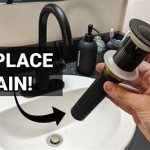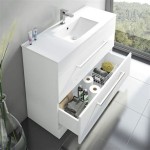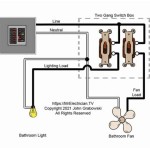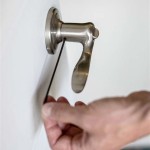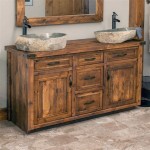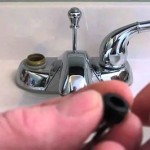Understanding Moen Bathroom Sink Drains: A Comprehensive Guide
The bathroom sink drain is a critical component of any bathroom plumbing system, responsible for efficiently and hygienically removing wastewater. Moen, a reputable manufacturer of plumbing fixtures, offers a diverse range of bathroom sink drains designed for durability, functionality, and aesthetic appeal. This article provides a detailed exploration of Moen bathroom sink drains, covering their types, installation, maintenance, and troubleshooting.
Types of Moen Bathroom Sink Drains
Moen offers a variety of bathroom sink drain types to suit different sink configurations and aesthetic preferences. The selection of the appropriate drain type is crucial for ensuring proper drainage and preventing leaks.
Lift Rod Drain: This is a traditional drain type commonly found in many bathrooms. It operates using a lift rod located behind the faucet. When the rod is lifted, a stopper inside the drain is lowered, allowing water to drain. Pushing the rod down seals the drain, preventing water from escaping. Lift rod drains are relatively simple in design but can be prone to issues with the linkage mechanism and potential leaks around the stopper.
Pop-Up Drain: A more contemporary design, the pop-up drain functions by pressing down on the drain stopper to seal it and pressing again to release it and allow drainage. This type eliminates the need for a lift rod, offering a cleaner look. Moen pop-up drains are typically available in various finishes to match the faucet and other bathroom fixtures. The internal mechanism of a pop-up drain can sometimes accumulate debris, requiring occasional cleaning.
Grid Drain: Grid drains are often used in sinks without an overflow. They feature a fixed grid or strainer that prevents large objects from entering the drainpipe while allowing water to flow freely. Grid drains are particularly suitable for vessel sinks and other unconventional sink designs where a stopper is not desired. They are relatively easy to clean as the grid is typically accessible from above the sink.
Click Clack Drain (Push Button Drain): Similar to the pop-up drain, the click clack drain operates with a push-button mechanism. A single press seals the drain, and another press releases it. This type is known for its ease of use and modern aesthetic. The internal mechanism can be prone to clogging from hair and soap scum, so regular cleaning is recommended.
Overflow vs. Non-Overflow Drains: Another important distinction is whether the drain is designed for sinks with or without an overflow. Sinks with an overflow have a small opening near the top of the bowl that allows excess water to drain, preventing the sink from overflowing. Drains designed for these sinks have an opening to connect to the overflow channel. Sinks without an overflow require a drain designed specifically for that purpose.
When selecting a Moen bathroom sink drain, it is essential to consider the sink type, the presence or absence of an overflow, and the desired aesthetic. Matching the drain finish to the faucet and other fixtures will create a cohesive and visually appealing bathroom design.
Installation of a Moen Bathroom Sink Drain
Installing a Moen bathroom sink drain is a relatively straightforward process, but it requires careful attention to detail to ensure a watertight seal and prevent leaks. Proper installation is crucial for the drain's long-term performance and reliability.
Preparation: Before beginning the installation, gather the necessary tools and materials, including a pipe wrench, adjustable wrench, plumber's putty or silicone sealant, a bucket, and a clean cloth. Turn off the water supply to the faucet. Disconnect the existing drain assembly, if applicable. Clean the sink drain opening thoroughly, removing any old putty or debris. Inspect the new Moen drain components for any defects or damage.
Assembling the Drain Body: The drain body typically consists of several components, including the drain flange (the part that sits inside the sink), a rubber or silicone washer, a cardboard or fiber washer, and a mounting nut. The order in which these components are assembled is critical for creating a watertight seal. Apply a bead of plumber's putty or silicone sealant to the underside of the drain flange. Insert the drain flange into the sink drain opening from above. From below the sink, slide the rubber or silicone washer onto the drain body, followed by the cardboard or fiber washer, and then the mounting nut. Tighten the mounting nut by hand as much as possible.
Connecting the Drainpipe: Moen drains are typically designed to connect to standard 1 1/4-inch drainpipes. Depending on the drain type, the connection may involve a threaded connection or a slip-joint connection. For threaded connections, apply Teflon tape to the threads to ensure a watertight seal. For slip-joint connections, ensure that the washers are properly positioned and tightened. Connect the drainpipe to the drain body and tighten the connections securely.
Installing the Stopper Mechanism (Lift Rod or Pop-Up): If the drain is a lift rod or pop-up type, install the stopper mechanism according to the manufacturer's instructions. This typically involves inserting the stopper into the drain body and connecting it to the lift rod or pop-up actuator. Ensure that the stopper moves freely and seals the drain properly when activated.
Testing for Leaks: After completing the installation, turn on the water supply to the faucet and check for leaks around the drain flange, the drainpipe connections, and the stopper mechanism. If any leaks are detected, tighten the connections further or reapply plumber's putty or silicone sealant as needed. It is essential to address any leaks immediately to prevent water damage.
A properly installed Moen bathroom sink drain will provide years of reliable service. Following the manufacturer's instructions and taking care to create watertight seals are essential for a successful installation.
Maintenance and Troubleshooting of Moen Bathroom Sink Drains
Regular maintenance and prompt troubleshooting are essential for ensuring the long-term performance and preventing common issues with Moen bathroom sink drains. Proper care can extend the lifespan of the drain and avoid costly repairs.
Regular Cleaning: Over time, bathroom sink drains can accumulate hair, soap scum, and other debris, leading to slow drainage or clogs. Regularly cleaning the drain can prevent these problems. For lift rod and pop-up drains, remove the stopper periodically and clean it thoroughly. Use a small brush or a bent wire to remove any debris from the drain opening. For all drain types, flushing the drain with hot water and a mild detergent can help to dissolve accumulated soap scum.
Addressing Slow Drainage: If the sink is draining slowly, it may be an indication of a partial clog. Try using a plunger to dislodge the clog. If the plunger is ineffective, a drain snake or auger can be used to break up or remove the clog. Insert the drain snake into the drain opening and rotate it to break up the clog. Be careful not to damage the drainpipe during this process. Alternatively, a chemical drain cleaner can be used, but it is important to follow the manufacturer's instructions carefully and to use it sparingly, as harsh chemicals can damage the drainpipe over time.
Repairing Leaks: Leaks around the drain flange or drainpipe connections can occur due to loose connections, worn washers, or deteriorated plumber's putty. Tighten the connections first. If the leak persists, replace the washers or reapply plumber's putty or silicone sealant. For leaks around the drain flange, it may be necessary to remove the drain and reapply plumber's putty or silicone sealant to the underside of the flange.
Stopper Issues: Lift rod and pop-up drain stoppers can sometimes become misaligned or stuck. Adjust the lift rod linkage or pop-up mechanism to ensure that the stopper moves freely and seals the drain properly. If the stopper is damaged or worn, it may need to be replaced.
Replacing Drain Components: Over time, certain drain components, such as washers, stoppers, and linkages, may wear out and need to be replaced. Moen offers replacement parts for its bathroom sink drains, making it easy to repair and maintain the drain. When replacing drain components, be sure to use genuine Moen parts to ensure compatibility and proper function.
By following these maintenance tips and addressing any issues promptly, you can keep your Moen bathroom sink drain functioning smoothly and efficiently for years to come. Regular maintenance and timely repairs will help to prevent costly plumbing repairs and ensure a hygienic and functional bathroom environment.
In addition to the above, it is crucial to consider the material of the drain when discussing maintenance. Moen offers drains in various finishes, including chrome, brushed nickel, oil-rubbed bronze, and matte black. Each finish requires specific cleaning methods to maintain its appearance and prevent corrosion. For example, avoid abrasive cleaners on chrome finishes, as they can scratch the surface. Instead, use a mild soap and water solution. Brushed nickel and oil-rubbed bronze finishes are more resistant to water spots and fingerprints but should still be cleaned regularly with a non-abrasive cleaner. Matte black finishes can show soap scum more easily, so frequent cleaning is recommended.
Another key aspect of maintaining a Moen bathroom sink drain is preventing hard water buildup. Hard water contains minerals that can deposit on the drain surfaces, leading to clogs and corrosion. If you live in an area with hard water, consider installing a water softener to reduce the mineral content of the water. Alternatively, you can periodically flush the drain with vinegar to dissolve mineral deposits. Pour a cup of white vinegar down the drain and let it sit for about 30 minutes before flushing with hot water.
Finally, it is important to educate all members of the household about proper drain usage. Avoid pouring grease, coffee grounds, or other solid waste down the drain, as these materials can contribute to clogs. Encourage everyone to use a hair strainer or drain screen to catch hair and other debris before they enter the drainpipe. By taking these preventative measures, you can minimize the risk of clogs and extend the lifespan of your Moen bathroom sink drain.

Moen Chrome Bathroom Sink Pop Up Drain Kit At Com

Moen Matte Black Bathroom Sink Pop Up Drain In The Drains Stoppers Department At Com

Moen 140780 Mon140780 Independent Mechanical Supply

Pacific Plumbing Supply Company Moen Pivot Rod And Clip Assembly For 10790 99500 Bathroom Sink Drain

Moen Lavatory Drain Assembly 96497 The Home Depot

Moen Replacement Drain Oil Rubbed Broe Bathroom Sink Stopper In The Drains Stoppers Department At Com

Moen Gibson Single Hole Handle Bathroom Faucet With Drain Assembly In Chrome 6145 The Home Depot

Moen 10709bc Replacement Drain Assembly With Plug And Seat Build Com

Moen Chrome Bathroom Sink Drain Kit In The Drains Stoppers Department At Com

Moen Lindor Brushed Nickel Single Handle Bathroom Faucet 4 In Com
Related Posts

